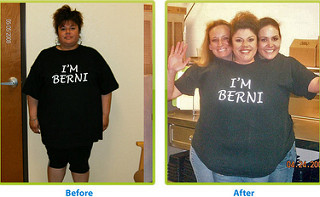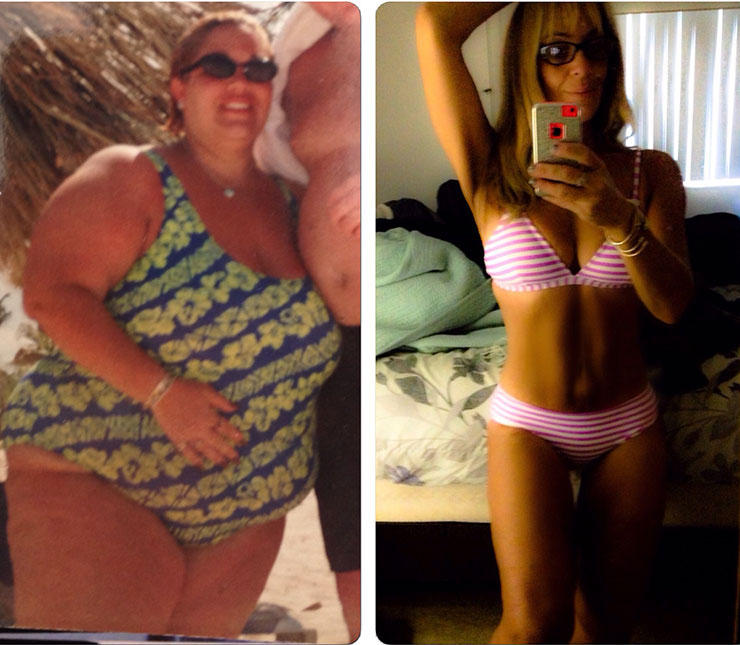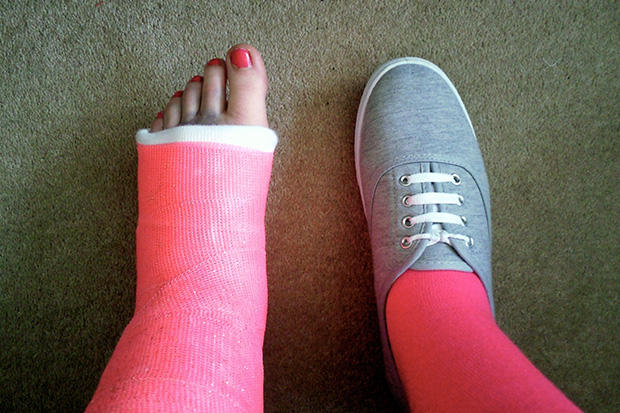How to Lose 10 Pounds in One Week
Healthy weight loss is usually 1 to 2 pounds per week; losing 10 pounds in one week is risky, should not be done often, and should only be attempted with the approval of your doctor. To lose 10 pounds in one week, you'll need to burn between 3,500 and 5,000 calories more than you consume each day by restricting your diet to small portions of nutritious yet low-calorie foods, and significantly increasing your aerobic exercise with interval training, sports, and other vigorous activities. This goal is both risky and difficult to achieve, but it can be done.
Steps
Part 1 Counting Calories
-
1
Take in fewer calories than you burn in a day. That's the whole secret to weight loss. And while the theory may be simple, the practice is really hard. It takes 3,500 calories to burn a pound. This means that you need to burn 3,500 calories more than you take in with food.[1]
- Know that you will need to exercise in order to burn 10 pounds in one week. Starving yourself is not an option. In fact, starving yourself makes weight loss harder, especially after you're done with your diet.[2]
- Understand that you'll be burning calories while doing daily activities such as walking around, walking up stairs, and even breathing. It won't be many calories, but you don't have to expect to burn all your calories doing hard exercise.
-
2
If you want to lose 10 pounds in a week, you'll need to burn 5,000 calories more than you take in per day. That's a lot. That's not meant to discourage you; it's only as a reminder of how hard losing 10 pounds in a week actually is. Prepare yourself for a tough, tough journey!
- Just to give you bit of an idea about how much that is, consider this: a 160 pound person burns about 1,000 calories playing competitive soccer for 90 minutes.[3] That means you'd need to play competitive soccer for 7.5 hours during the day to burn 5,000 calories. Not impossible, but very difficult!
-
3
Understand that the average person burns about 2,000 calories a day doing normal activities.[4] This means that if you consume exactly 2,000 calories in food every day, you'll stay the same — you won't gain or lose weight.
- If you're trying to lose weight, as you probably do, a healthy person should consume at least 1,200 calories per day, regardless of what their diet is. If you eat 1,200 calories, you'll have about 4,000 calories to burn a day to meet your goal.
Part 2 Diet
-
1
Drink water only. Water is the dieter's best friend. Sweet, sugary, or caffeinated drinks are the enemy of the dieter. A simple sweet "energy" or "sports" drink can be as much as 400 calories. That's a third of your total calories for the entire day. Stay away from any drink but water, with one exception.
- Unsweetened green tea is acceptable to drink, on occasion. If you're sick and tired of drinking just water day in and day out, the occasional green tea is fine. Green tea has lots of antioxidants and 0 calories, which makes it fine to drink.
- If you're really hungry during meals, down a nice big cup of water right before you eat. This will help trick your stomach into thinking that you're more full than you actually are, making you less hungry.
-
2
Cut the simple carbohydrates out of your diet. Simple carbs, also called refined carbohydrates, are usually not very nutritious for our bodies and get absorbed by the body very quickly.[5] Stay away from simple, refined carbohydrates such as these while on your diet:
- Cookies, candies, cakes, and other baked sweets
- Honey, molasses, and syrup
- White bread, white rice, and normal pasta
- Many packaged cereals
-
3
Replace the simple carbs with complex carbs. Complex carbohydrates, unlike simple carbohydrates, are full of fiber as well as other nutrients, and get digested by the body and released into the blood stream far slower.[6] Examples of complex carbs include:
- Whole grain bread, whole grain pasta, brown rice
- Beans and legumes, such as lentils, carrots, and sweet potatoes
- Veggies and fruits like asparagus and apricots
- 4 Eat lean protein. Go for beef that is 98% lean and only 2% fat. Go for chicken breast without the skin attached. Soy products like edamame or tofu are also high in protein, as are many types of fish, including salmon.
- 5 Positively stay away from fast food. In addition to cooking everything in trans fat, fast food burgers, fries, and shakes (or burritos, mac 'n' cheese, or sandwiches) are whoppers when it comes to salt and sugar. They are essentially empty carbs, with no real nutrients to them. If you're serious about shedding those pounds and getting your weight back on the right path, you'll stay away from fast food.
-
6
Eat like a king for breakfast, a prince at lunch, and a pauper for dinner. Ever hear the phrase? It has some truth behind it. Eat early on to jump-start your metabolism and give you enough energy to last comfortably until lunch, and then for dinner begin to wind down and eat the smallest meal of the day. Here are some examples of meals you could cook for yourself during the day, with one snack in between:
- Breakfast: egg-white omelet with spinach and chicken breast, along with a banana and some fresh blueberries.
- Lunch: leftover salmon steak over quinoa, with a small salad
- Snack: handful of pistachios
- Dinner: bok choy, carrot, mushroom, and pepper stir-fry
- Some foods that help you lose weight or have fewer calories are:
- peanut butter
- rice cakes
- berries
- green vegetables
- green tea
- water
- Greek yogurt
- unsalted nuts
- almond milk
-
7
Start a calorie journal in which you write down the values of everything you eat. Creating a calorie journal and writing in it consistently will help you know when you've gone over your limit. It will tell you what foods worked when and whether they tasted good. It will give you a record of your struggles, which are always fun to look back on after the pain has passed!
- Get very good at calorie counting and serving sizes. It'll be tough to calculate everything in the beginning, but after a while it'll seem like second-nature. Be religious about estimating how many calories are in a certain food or meal. Be accurate! Lying to yourself isn't worth it if the only one you're hurting is you.
- 8 When you slip (and everyone does), don't splurge. It's okay to slip up every once in a while and eat something you know you're not supposed to. Everyone does that. But when you slip, don't fall down. Don't justify splurging and going way overboard, ever. It'll just make your goal even tougher and discourage you even more.
Part 3 Exercise
-
1
Walk everywhere. Need to go the grocery store? Walk there. Need to get up to the fifteenth floor of a building? Walk there, don't take the elevator. Need to get to soccer practice? Walk there. Look at each walking opportunity as an opportunity to burn more calories and to get fitter.
- Get a pedometer. A pedometer will keep track of the number of steps you take during the day, and you can hide it on your hip so that no one can see it. A good pedometer will convert the number of steps taken into calories burned. They're worth it!
-
2
Get in the habit of warming up/stretching before going all out. Put on some of the best, most motivating 80s dance music, and get ready to get ready. Warming up and stretching will help you get the most out of your exercise. Plus, who can exercise when they're injured? Examples of warm up exercises include:
- 20 push-ups, 20 sit-ups, and 20 burpees. (Burpees are when you jump in the air then drop down do a push-up and repeat.)
- Running in place intensely for 1 minute, and then switching to 1 minute of light jogging in place.
- Touch your toes, stretch your arms in tandem, get those quads and hamstrings loosened, and don't forget your torso and neck.
-
3
Try interval training. Interval training is where you do really intense activity for only a short period of time, and then moderate or light intensity work for the majority of the time. Scientists have found, in several studies, that people who do interval training actually end up exercising for shorter periods of time and burning more calories than people who go at medium intensity for their whole workout.[7]
- An example of interval training would be this: while running around the track, go as hard/fast as you can for one whole lap, then jog at light speed for the remaining three laps. Every four laps is a mile. Feel — and love — the burn.
- 4 Get involved in a sport. The great part about sports is that they're competitive. Competition makes us push ourselves harder than we would have by ourselves, for the most part. You may be thinking: I'm not good at any sports, or I'm not comfortable doing any sports. Just remember that people respect other who try hard and who respect themselves. If you think doing soccer, basketball, or swimming would be fun and keep you engaged, then go for it. Let your competitive streak burn the calories for you.
-
5
Make use of cardio machines. If you don't have some cardio machines with you at home, consider joining a gym so that you can use some. Try out the following cardio machines and see which ones work best for you:
- Treadmill. The treadmill might actually feel worse than free running, but it's definitely better than nothing. Try to find a nice, fast pace that keeps you sweating.
- Elliptical. You can set a different resistance strength for most ellipticals, making this a good strength training/cardio dual workout.
- Stationary bike. If you take a spinning class, get ready to have your butt kicked. Spinning class on the stationary bike is a great way to lose weight.
- 6 Do cross-training. Cross-training involves a range of different strength, endurance, and aerobic exercises that will work out many different parts of your body while generally keeping you from getting bored (which is a huge reason why people stop exercising). Cross-training regimes like Crossfit may not be the best at burning a lot of calories very quickly (they're better at replacing fat with lean muscle), but it's worth trying out. Who knows, you could find a new inspiration!
-
7
Dance the night away. To really get tap your aerobic ability, try dancing. No, not necessarily in your room, although that's always encouraged. What about a dance class at your local Y?
- You could try something like basic jazz or pop or hip-hop classes if you're familiar already and you find the dance moves or music comforting.
- You could also try something like zumba, which combines Latin and international music into one fantastic workout. Zumba, like regular dancing classes, is taught by a dance instructor.
-
8
Do exercise, and do it double-time. You'll probably need to exercise twice as much to meet your goals. Better pick a couple exercises that you really like, because chances are you'll be doing a lot of them in order to burn 10 pounds in a week.
- You might want to set aside 4 hours a day in order to exercise: 2 2-hour sessions, broken up in the middle with a break. If you need any motivation, just thinking of all the weight you're saying goodbye to and the fabulous body that you'll be welcoming in no time flat. Good luck!
-
Get Paid To Lose Weight!
When you’re bombarded with five pumpkin spice latte ads in a single da
-
Dan’s Weight Loss Story
Hello. I believe our story can help many. I was over 600 l
-
Quick Weight Loss Diets Do They Really Work
While you read these words, right now-- will you be getting the most
-
Couple of QuickWays To Conquer Weight Loss Plateau
You were probably losing successfully for the first few weeks af
-
Heres Your Guide To Obtaining A Quicker Weight Loss
Before you begin joining any weight loss program, you need to underst
-
4 Best Quick Weight Loss Diet Tips
Many overweight individuals put on weight gradually. Some may accept
- DON'T MISS
- 7 Fast And Easy Tips Help Your Weight Loss Success
- My DNA Kept Me From Losing Weight For Years—Now Im 150 Pounds Lighter
- Quick Teen Weight Loss
- 12 Ways To Lose Weight Without Dieting
- How to Lose Weight by Eating Slowly
- Proven once again: water with lemon for weight loss
- How to Stick to Your Weight Loss Goals
- Hca And Weight Loss
- Eating To Lose Weight
- Enhance Your Confidence With Corporate Wellness Package




